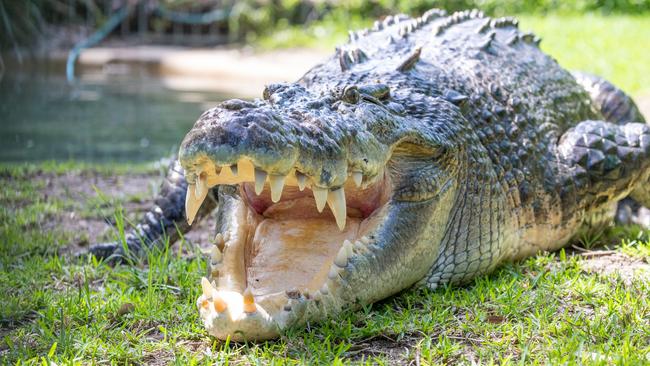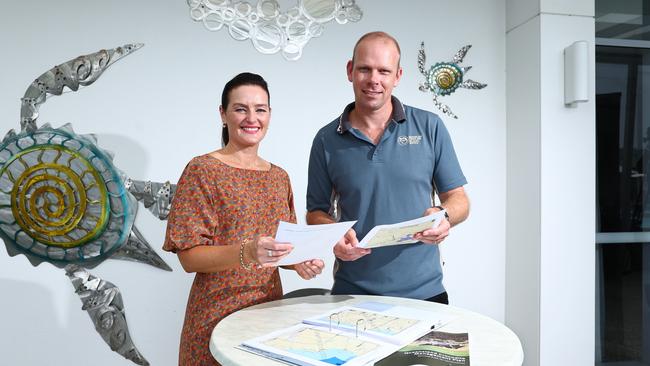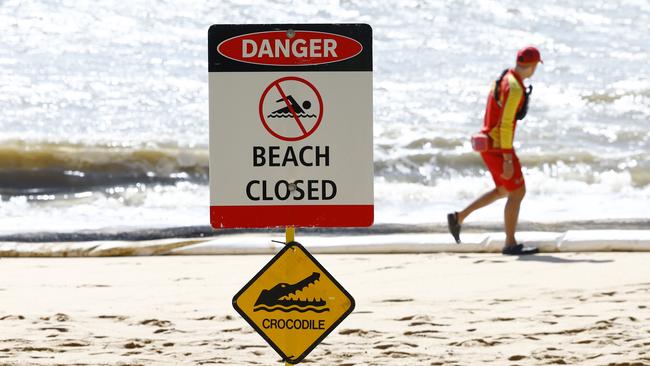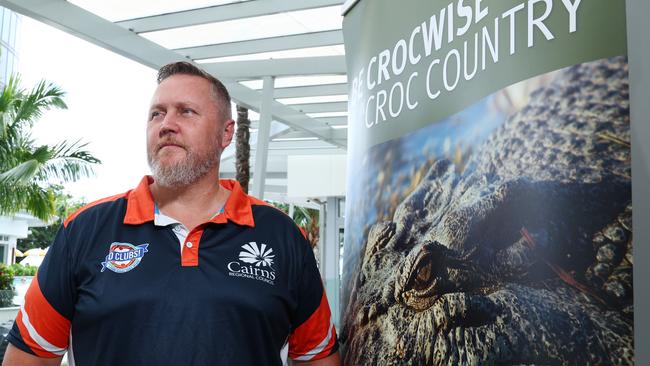New draft croc zoning maps guide management of deadly wildlife
A long-awaited update of the Queensland crocodile management plan has resulted in changes to the way crocodiles are dealt with by authorities in some populated areas, with the public now invited to have their say on the draft.

Cairns
Don't miss out on the headlines from Cairns. Followed categories will be added to My News.
A long-awaited update of Queensland crocodile management plan expected to be implemented later this year will not create a new active removal zone at Goldsborough but will declare an atypical habitat zone at Lake Mitchell in efforts to keep the area croc free.
The updated 2018 document will open to public consolation as a draft on Thursday and was launched by Environment Minister Leanne Linard from the annual crocodile roundtable held at the Crystalbrook Riley hotel.
The new plan will condense six management zones into four, to include, active removal zones, targeted crocodile removal zones, general management zone and atypical habitat zones.
Barrier and removal zones and transitory zones have been removed from the plan.

The overarching framework of the new plan aims to manage public safety while protecting crocs in the wild, but according to new zoning maps there will be no new removal zone at the upper reaches of the Mulgrave River at Goldsborough, despite the impassioned pleas from locals, Indigenous custodians and commercial water-sport operators.
But Tyto Wetlands outside Ingham will change from being a general management zone to an targeted removal zone.
And Lake Mitchell or Quaids Dam will become an atypical habitat zone where crocs can be removed.
Strategies to thin numbers including egg harvesting, culling and wild harvesting have not been endorsed as practical management solutions under the plan.

In response to the recent fatal attack on Edward Warusam at Saibai Island Ms Linard highlighted the importance of taking extra precautions when in Croc Country.
“A number of zones will now be part of targeted and active removal zones that weren’t previously,” she said.
Asked if additional zones would affect croc removal numbers principal wildlife officer with Queensland’s Department of Environment, Science and Innovation Dr Simon Booth expected more crocs to be taken from the wild under additional removal zones.
“There may be an increase depending on reports … but at this stage large increases in removals wouldn’t be conducive to achieving increases in public safety,” he said.
Dr Booth said sonar detect and deter technology would undergo field trials during the next 12 to 18 months in high risk attack areas.
“The deterrence side is an emerging project,” he said.
“Still a lot of unknown issues there and I guess, further work to be done.
“We hope in the coming years we’ll have something that may be of use in reducing the risk to Queenslanders.”

But the use of the technology to create a croc-free swimming area at Lake Placid is looking unlikely.
“Whether the sonar is applicable to that location is yet to be seen, but certainly quite a large body of water (such as Lake Placid) sonar may not be directly useful in that instance, but there are other technologies we’re also pursuing,” he said.
Crocodile management maps in the Townsville area have changed slightly with the removal of transitory zones.
The area along the eastern side of Magnetic Island, including the Nelly Bay Harbour, was previously categorised as a transitory zone, but on new proposed maps the area falls outside the management plan area.

Balgal Beach and parts of the Ross River and Ross Creek near the city were also previously considered transitory zones, but are now a targeted crocodile removal zone.
At Hinchinbrook, the areas near the Lucinda boat ramp, swimming enclosure and foreshore are in the targeted removal zone.
It also includes the Taylors Beach and Forest Beach boat ramps and swimming enclosures, the Mona Landing boat ramp and the Cassady Beach boat ramp.

Cairns Regional Council Deputy Mayor Brett Olds attended Wednesday’s croc roundtable and called for consistent messaging around swimming holes, and the removal of crocodiles from the threatened species register, given the population has largely plateaued after being hunted to the edge of extinction.
“We’ve got the council, the state government, the federal government, saying come to Australia, come to Cairns and go for a swim but then we’re also saying ‘hey, it’s Croc Country so it’s on you’,” he said.
“You can’t have a foot in both camps.
“If they’re not vulnerable anymore and back up to normal levels, why should they still be on the vulnerable list, it just seems to diminish the value of that list.”
In the 2021-22 State budget, $12m was allocated during a four-year period to manage the crocodile population and promote public safety.
An additional $4.175m was earmarked in the 2022-23 Budget for new crocodile detection, deterrence research and product development.
More Coverage
Originally published as New draft croc zoning maps guide management of deadly wildlife





